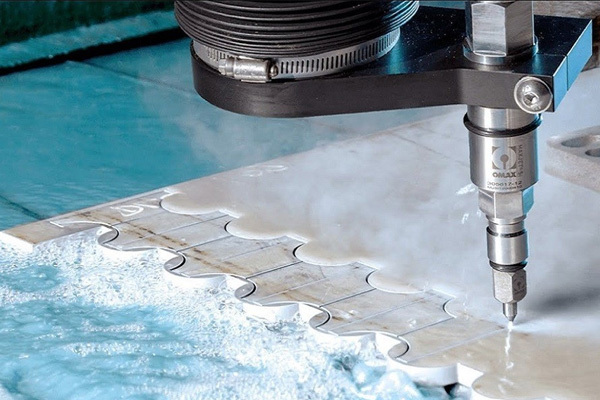HUAZHEN NEWS
Learn about the latest news of Huazhen and go further with us
23
2022
-
03
Waterjet cutting machine requirements for waterjet nozzles
Author:
The cutting speed and depth of the water jet increase with the decrease of the diameter of the nozzle outlet, but when the nozzle diameter is reduced under a certain pressure, the jet will be atomized near the nozzle due to the entrainment of the air, so that the Loss of cutting ability. The kerf depth and kerf width of the workpiece decrease substantially linearly as the nozzle diameter decreases. Under the same pressure, reducing the nozzle diameter will reduce the cutting energy consumption ratio of the jet. The straightness of the workpiece in the moving direction of the high-pressure jet has nothing to do with the diameter of the nozzle.
By observing the fracture surface quality of the workpieces with different materials and different process parameters after being cut, it is found that the cross-section morphology of the workpieces has common characteristics: the upper part of the cross-section is smooth and the lower part has concave and convex oblique stripes, and the jet penetration ability is low. There is an obvious pit area at the bottom of the section, and the shape of the cut section of the workpiece is V-shaped, the upper part is large and the lower part is small. When the depth of the incision reaches a certain level, the downstream section width does not change. In addition, the actual measurement shows that the size of the notch angle of copper plate, aluminum plate, marble and granite is between 514° and 616°. The notch angle of different materials is slightly different, and the size of the notch angle has nothing to do with the diameter of the nozzle. The incision width of the workpiece is larger than the jet diameter, and the smaller the diameter is, the more significant this trend is.
However, as the nozzle diameter increased (from 0.1mm to 0.4mm), the depth of cut decreased. The diameter of the nozzle outlet for cutting is recommended to be selected within 0.1l~0.3mm. In addition, although the cutting speed and cutting depth decrease with the increase of nozzle diameter, the kerf width increases, that is, the amount of material damage per unit time increases. Under the same pressure conditions, comparing the quality of the slits of materials processed with nozzles with diameters of 0.1mm and 0.4mm, it is also found that with the increase of the nozzle diameter, the slits become wider, the particle size of the chips becomes larger, and the quality of the slits (roughness) also significantly worse. The effect of nozzle diameter on cutting quality. The straightness of the specimen in the moving direction of the jet has nothing to do with the diameter of the nozzle, and the size of the notch angle has nothing to do with the diameter of the nozzle. At the same pressure, the reduction of the nozzle diameter reduces the penetration ability of the jet, thereby reducing the cutting quality.
Considering various factors such as energy consumption, saving of processed materials, cutting efficiency and equipment investment, the diameter of the nozzle for ordinary material cutting is preferably 0.16 to 110 mm, and abrasive jet cutting below 0.12 mm is not suitable. It can be considered that the overall energy relationship that the amount of material breakage increases with increasing jet power does not change. Although increases in jet pressure and nozzle diameter both increase jet power, the effects are quite different. The former significantly increases the cutting speed and cutting depth, while the latter only increases the amount of material broken, while the cutting speed and cutting depth decrease. However, due to the increase in the diameter of the nozzle, the contact area of the jet acting on the material to be processed increases, thereby increasing the crushing resistance of the material, resulting in a decrease in cutting speed and cutting depth.
Therefore, when the jet is used for cutting operations, increasing the jet pressure is an effective way to improve the working efficiency. However, in terms of jet cleaning, rust removal and peeling operations, since the cutting depth factor is hardly considered, and the jet action area factor is more important, so when the jet pressure meets the cleaning requirements, increasing the nozzle diameter will increase the operating speed. more effective.
Related information








